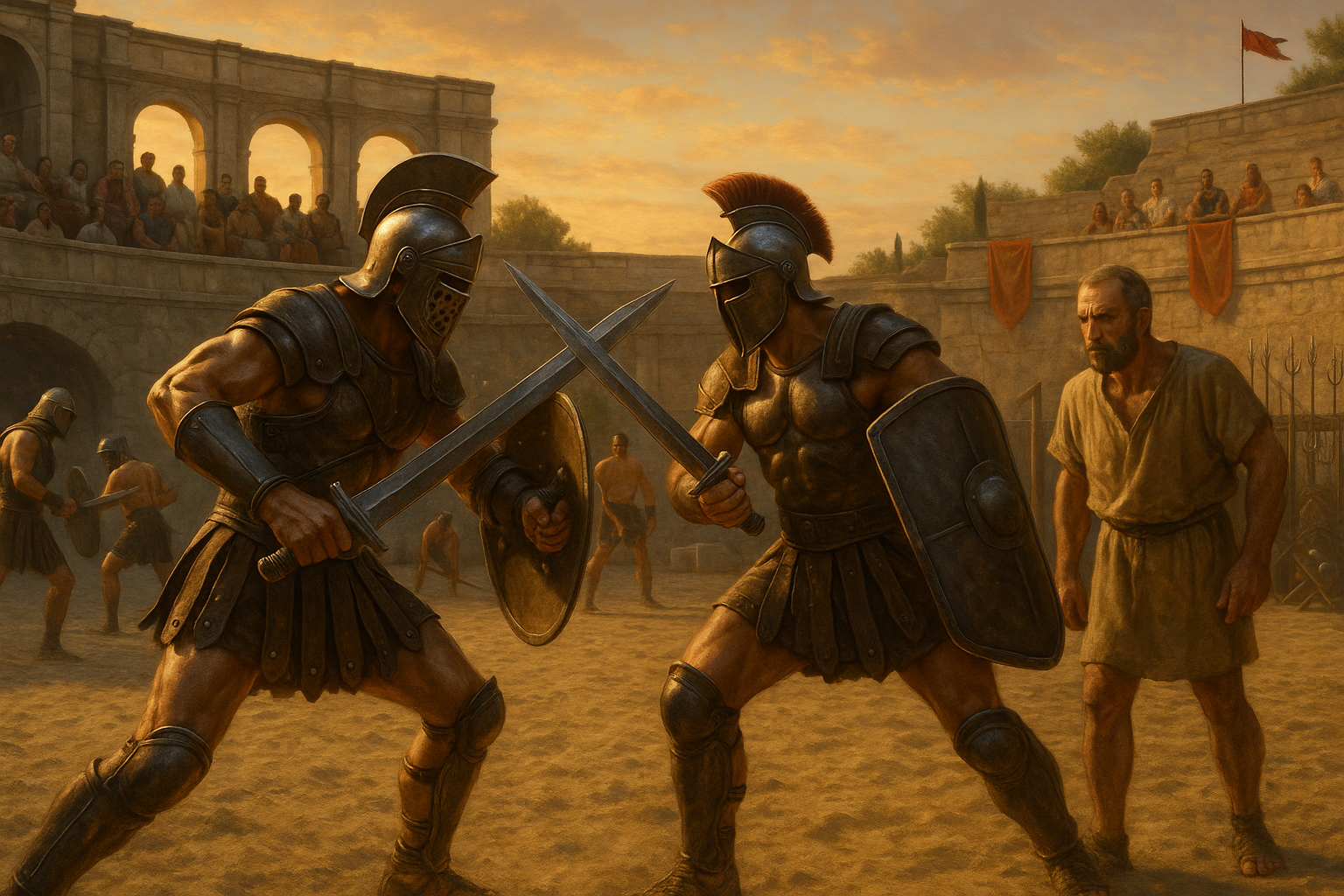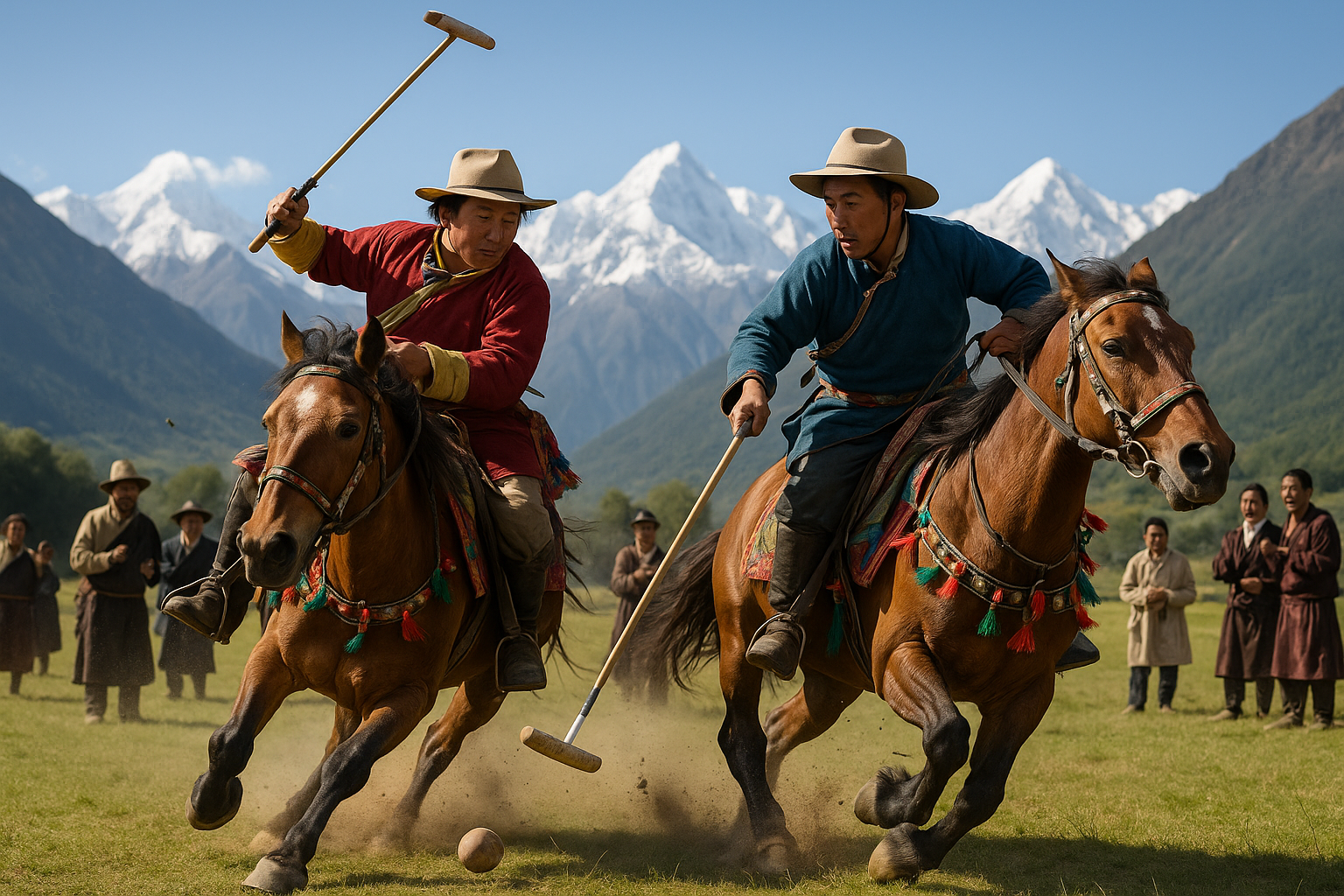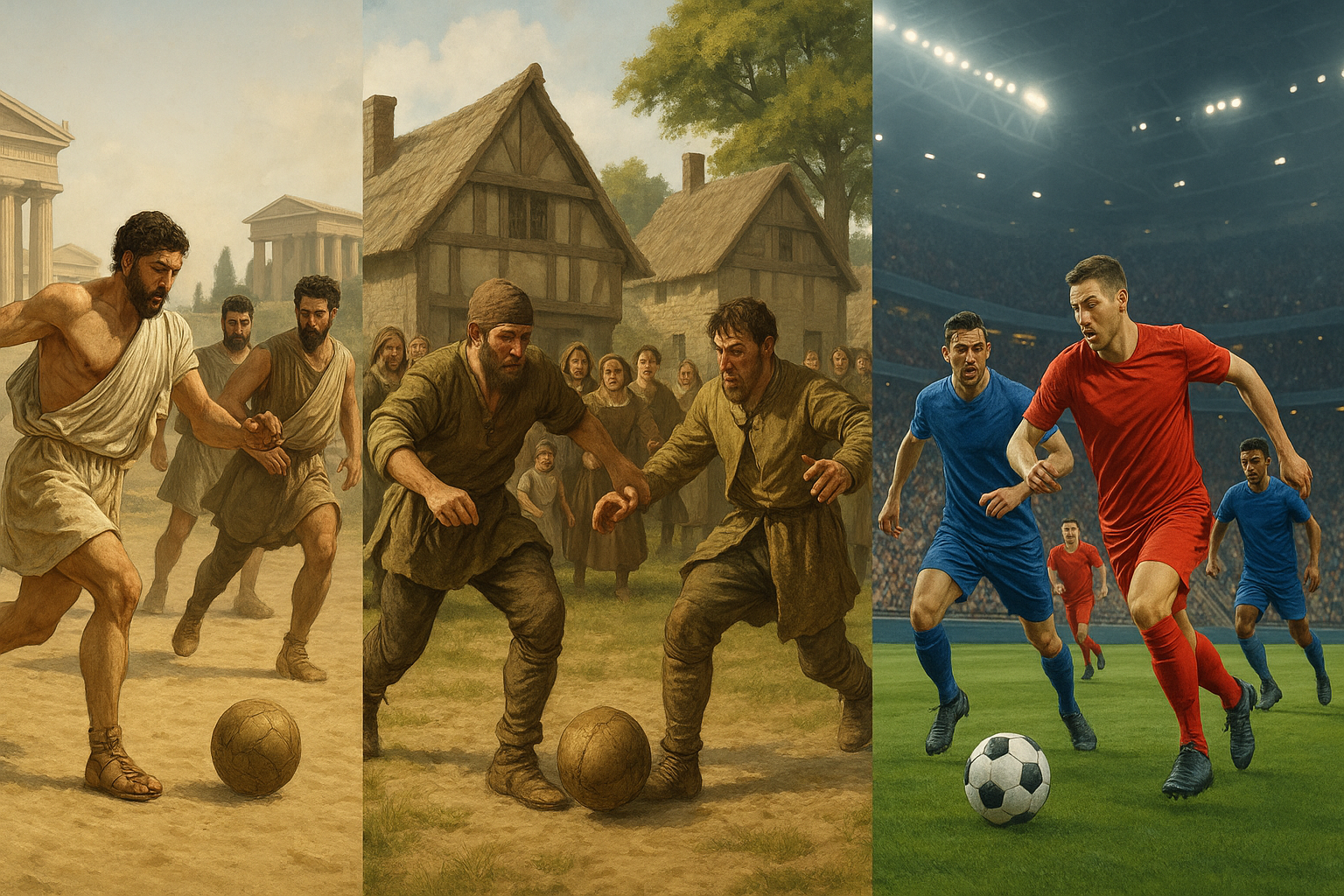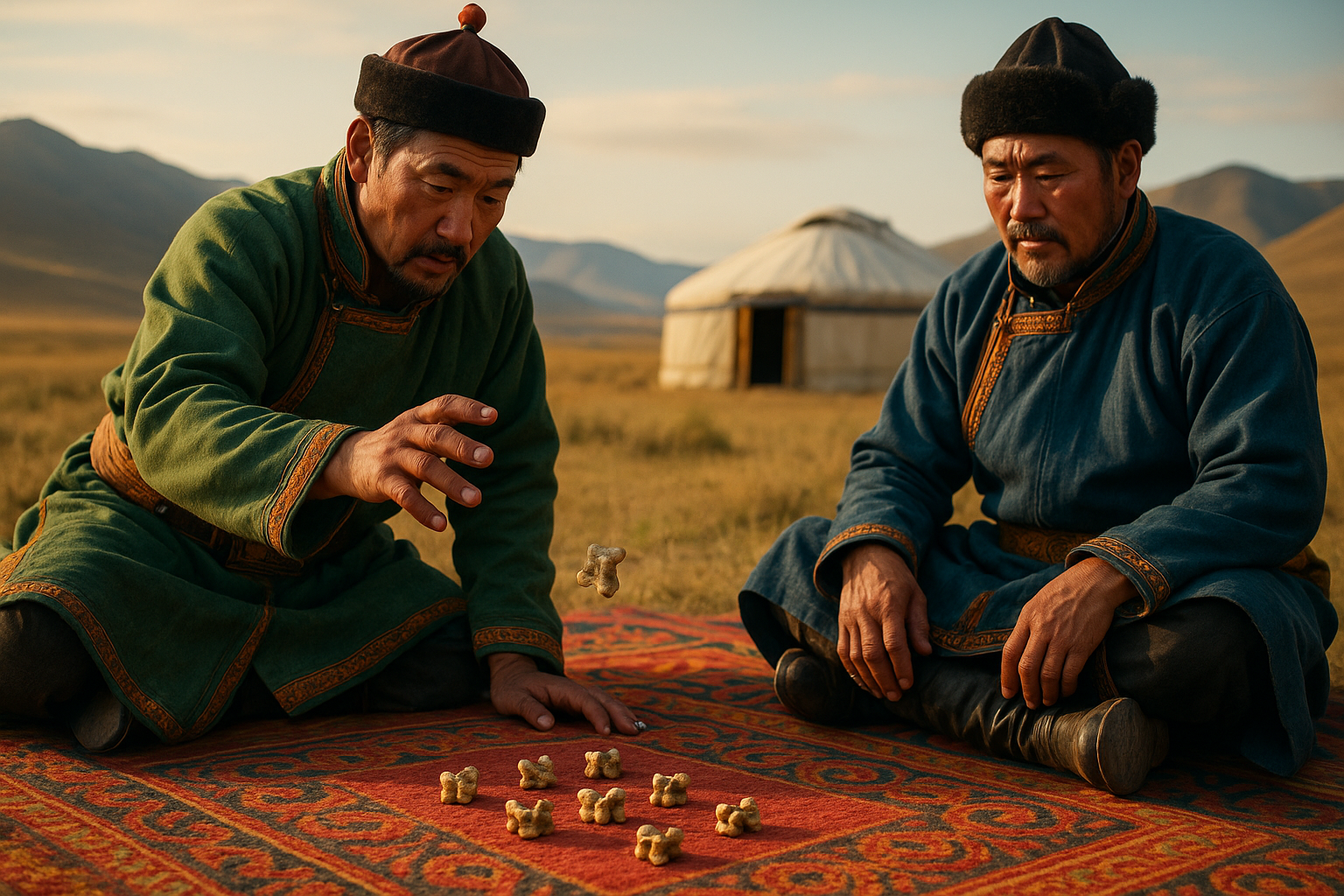Imagine standing in the heart of an ancient arena, where the air is thick with anticipation and the crowd’s roar reverberates like a living entity. Your muscles are taut, honed by countless hours of rigorous training. You are about to unleash your inner warrior, stepping into the shoes—or rather, the sandals—of a Roman gladiator. While we live in a world far removed from ancient Rome, the fascination with gladiators and their intense training regimes continues to captivate our imaginations. But what exactly did it take to transform an ordinary person into a legendary combatant of the Colosseum? ⚔️
The life of a Roman gladiator was one of extremes, marked by a grueling regimen that combined physical strength, mental resilience, and strategic prowess. In this comprehensive guide, we delve deep into the world of gladiator training, uncovering the secrets of their diet, exercise routines, and combat strategies. Whether you’re a history buff, a fitness enthusiast, or someone intrigued by the mystique of ancient warriors, this exploration offers a unique glimpse into a bygone era.
Our journey begins with a look at the origins of gladiatorial combat. Understanding the socio-political landscape of ancient Rome is crucial to appreciating why gladiators held such a significant place in Roman society. These spectacles were more than mere entertainment; they were a tool of political power and a reflection of Roman values. We’ll explore how gladiators were recruited, the different types of fighters, and what motivated individuals to take on such a perilous career.
Next, we transition into the rigorous training routines that forged ordinary men into formidable warriors. The training was not for the faint-hearted; it demanded discipline, perseverance, and an unwavering commitment to excellence. From strength-building exercises to agility drills and weapon mastery, each element played a critical role in preparing gladiators for the arena. 🏋️♂️
But physical prowess was only part of the equation. Gladiators needed sharp tactical minds to outthink and outmaneuver their opponents. We’ll delve into the strategic aspects of gladiatorial combat, examining how these ancient fighters employed psychology and cunning to gain an edge over their adversaries.
Of course, no discussion of gladiators would be complete without addressing their diet. Contrary to popular belief, gladiators were not the meat-eating hulks often depicted in modern media. Instead, they followed a primarily plant-based diet designed to maximize strength and endurance. We’ll reveal the dietary secrets that fueled these ancient athletes and discuss how modern interpretations can benefit contemporary fitness regimes. 🥗
Furthermore, we’ll explore the cultural and spiritual dimensions of being a gladiator. For many, combat was not just a physical test but a spiritual journey. Rituals and beliefs played a significant role in their lives, offering comfort and motivation amid the brutality of their existence. Understanding these aspects provides a holistic view of what it truly meant to be a gladiator.
As we unravel the layers of gladiator training, we’ll also draw parallels to modern fitness and martial arts practices. Many techniques and philosophies have endured through the centuries, influencing today’s approaches to physical and mental conditioning. Whether you’re seeking inspiration for your own fitness journey or simply wish to gain a deeper appreciation for these legendary warriors, this guide offers valuable insights that transcend time.
So, are you ready to step back in time and embrace the spirit of the Roman gladiator? As we venture further into this ultimate guide, you’ll discover that the path of the gladiator is not just about physical strength but about embodying resilience, strategy, and an indomitable will. Prepare yourself for an epic exploration of history, discipline, and the warrior’s ethos. 🌟

Conclusion
In concluding our exploration of Roman Gladiator Training, we have journeyed through the remarkable history and intense training regimes that shaped some of the most legendary warriors of ancient times. Let’s recapitulate the key aspects and reflect on their significance today.
Roman gladiators were not merely entertainers; they were symbols of strength, endurance, and bravery. Their origins trace back to the Roman Empire’s need to exhibit power and control, often through spectacles that both awed and entertained the masses.
**Training Regimens**
Gladiators underwent rigorous training, which was both physically demanding and strategically designed to prepare them for combat. These sessions were not just about physical strength but also about mastering various weapons and combat techniques. They lived under strict routines that emphasized discipline, endurance, and resilience.
**Diet and Lifestyle**
Their diet was surprisingly modern, emphasizing grains, vegetables, and protein to build muscle and stamina. This balanced nutrition played a crucial role in their physical conditioning, showing that even ancient athletes understood the importance of a well-rounded diet.
**Philosophy and Mindset**
Perhaps the most intriguing aspect is the mental fortitude gladiators possessed. Their training included developing a mindset that embraced challenges and focused on survival and victory, teaching us timeless lessons in perseverance and mental strength.
**Modern Applications**
Today, the principles of gladiator training can inspire modern fitness enthusiasts and athletes. The focus on holistic development — physical prowess, strategic thinking, and mental resilience — can be applied to various disciplines, encouraging us to unleash our inner warriors in whatever battles we face.
#### The Importance of This Topic
Understanding gladiator training offers more than historical insights; it provides inspiration for contemporary life. It reminds us of the human spirit’s capacity to overcome adversity and the importance of preparation, discipline, and courage. By embracing these ancient practices, we can foster a mindset geared toward achieving personal goals and overcoming modern-day challenges.
#### Engage and Share
We hope this guide has sparked your interest in Roman gladiators and their training methods. Whether you’re a history buff, a fitness enthusiast, or someone seeking motivation, there’s something in their story for everyone. We encourage you to:
– **Comment**: Share your thoughts and insights on what you found most fascinating about gladiator training.
– **Share**: If you found this article inspiring, consider sharing it with friends or on social media to spread the knowledge.
– **Apply**: Try incorporating some aspects of gladiator training into your routine, whether through physical exercise or mental conditioning.
—
Thank you for taking the time to delve into the world of Roman gladiators with us. May their legacy inspire you to face your own battles with the courage and determination of a true warrior. 💪
For more information on gladiator training, you can explore these resources:
1. [History.com – Gladiators: Fighters of the Roman Empire](https://www.history.com)
2. [National Geographic – Gladiators: Heroes of the Roman Amphitheatre](https://www.nationalgeographic.com)
Feel free to reach out with questions or for further reading recommendations. Let’s continue to learn and grow from history’s most formidable fighters! 🌟
—
**Note:** The links provided are placeholders. Please verify and replace them with accurate and active links to ensure the references are current and relevant.
Toni Santos is a cultural revivalist, play historian, and kinetic storyteller who travels time through the games we left behind. With a deep reverence for lost pastimes, Toni excavates forgotten sports, ancestral competitions, and community games that once defined how people moved, bonded, and thrived. From ancient Mesoamerican ball courts to medieval street games, nomadic strategy contests, and pre-colonial ritual play, Toni revives rulebooks that were never digitized—and champions a worldview where games weren’t just leisure, but meaning, skill, and survival. Combining ethnography, movement studies, game design, and oral tradition, he reconstructs games piece by piece, consulting archives, elders, and fragments of folklore. His mission is not only to replay the past, but to inspire new generations to rediscover joy in rules that challenge, unite, and reflect forgotten values. At the helm of Vizovex, Toni documents these rediscoveries with playable guides, interactive reconstructions, motion-capture reenactments, and interviews with guardians of ancient play. His platform speaks to: Experimental game designers and kinetic anthropologists Educators looking to decolonize sports curriculums Movement artists and cultural preservationists Playful minds seeking what we once valued in the games we played Whether it’s reimagining a Viking endurance sport, mapping traditional Māori games, or crafting tournaments for extinct athletic rites, Toni urges us to move like our ancestors once did—and play with purpose again.




